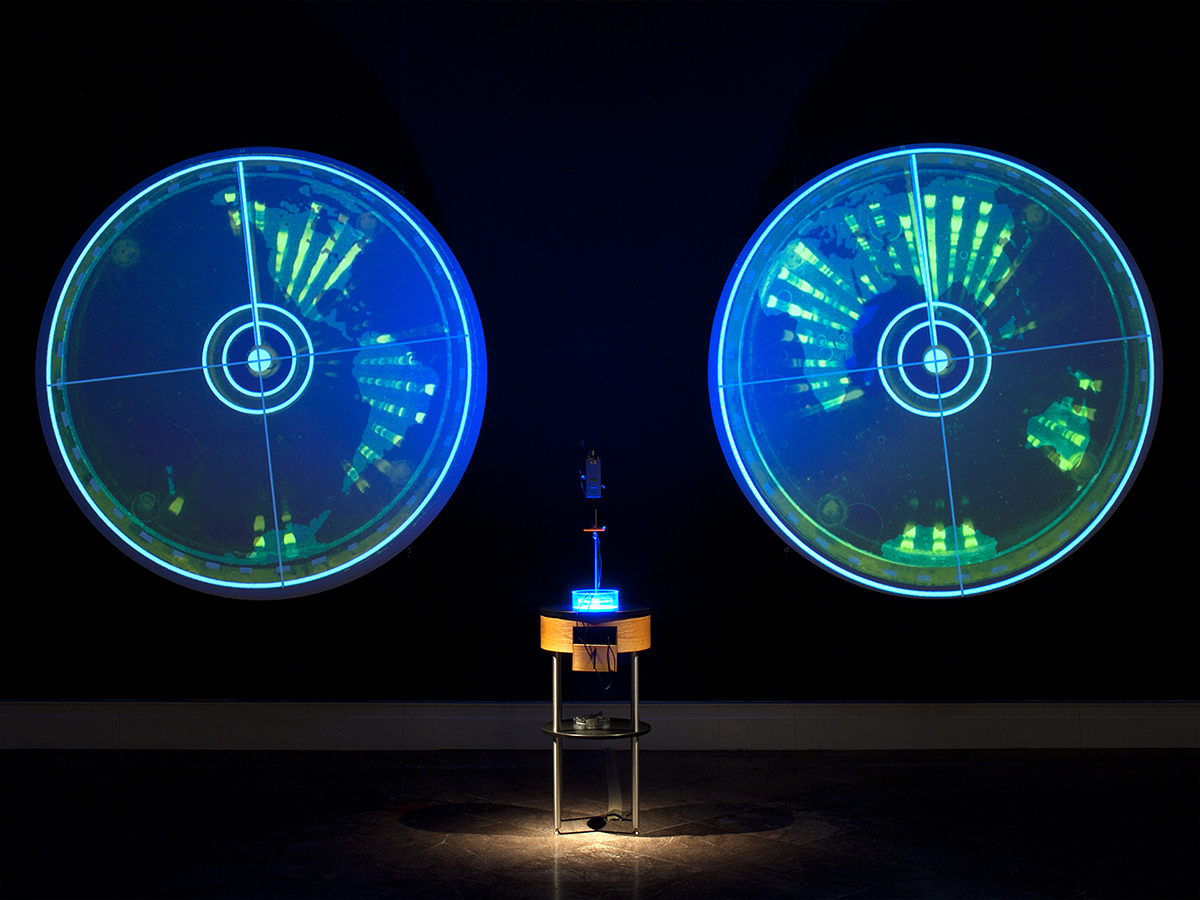Exhibition to showcase new media art in Goldsen archive
By Melanie Lefkowitz

An interactive Cornell University Library exhibition will showcase 50 years of new media art in Cornell’s collections, from the emergence of 1960s single-track video art to the Internet art of the 21st century.
The Division of Rare and Manuscript Collections’ exhibit, “Signal to Code: 50 Years of Media Art in the Rose Goldsen Archive,” traces the rise of new media art as the Internet and new technology helped it to flourish into a vibrant international art form, crossing artistic boundaries and geopolitical zones.
Visitors to the exhibition, opening March 17 in the Carl A. Kroch Library, will view and experience artworks at 15 stations in various formats, including CD-ROM, sound art and Internet art, from Cornell’s Rose Goldsen Archive of New Media Art.
An opening lecture, “Matter as Media” by new media artist and University at Buffalo professor Paul Vanouse, will be held in Lewis Auditorium, Goldwin Smith Hall March 17 at 4:30 p.m., followed by a reception in 2B Kroch Library at 5:30 p.m. Both are free and open to the public.
“It’s going to be a very interactive exhibit,” said Tim Murray, curator of the Goldsen archive and the exhibit, and professor of comparative literature and English. “We want visitors to appreciate the deep history of 50 years of media art that we’re fortunate to maintain in the archive, and we’re hoping that Cornell and the Ithaca community will celebrate their important place in this history.”
Central New York played a significant role in the rise of media art. In the 1970s, Philip Mallory Jones, MFA '72, a prominent new media artist, created the influential Ithaca Video Festival. The Experimental Television Center, based in Owego, New York, and in operation from 1969 to 2011, was one of North America’s pre-eminent centers for experimental video art. Cornell University Library also hosted the largest international exhibition of CD-ROM Art in 1999, as well as the online net.art journal, CTHEORY Multimedia.
Today, the Experimental Television Center’s collection of more than 3,000 works of art is part of the Goldsen archive. Jones’ master’s thesis, as well as screening tapes from the Ithaca Video Festival, will be on display as part of the exhibit.
In addition to artwork, the collection includes paper archives of granting agencies including the Rockefeller Foundation’s Grant for New Media Art and the New York State Council on the Arts’ Electronic Media and Film Program, helping to illustrate the rise of new media art and its artists.
“Between the artworks themselves and this expansive documentation of the contexts they came from – it’s amazing history to have at your fingertips,” said Madeleine Casad, associate curator of the Goldsen archive.
Among the first collection of its kind, the Goldsen archive was founded in 2002 and named after the late Cornell professor Rose Goldsen, a pioneering critic of the commercialization of mass media. The archive is focused on collecting important works and preserving them, since many exist in fragile or obsolete formats.
“We came to realize very early on that much of the work we were preserving was suddenly under threat because of changing standards of computer hardware and software, which then shifted part of our focus to preservation,” Murray said.
Though the collection has strong local roots, it also spans continents, and includes the Wen Pulin Archive of Chinese Avant-garde Art, 360 hours of videotape documenting Chinese contemporary art and culture.
Works from the Pulin archive will be on display, as will an interactive simulation of 1960s-, ’70s- and ’80s-era tools used to create new media art in its earliest forms.
Melanie Lefkowitz is a staff writer and editor at Cornell University Library.
Media Contact
Get Cornell news delivered right to your inbox.
Subscribe